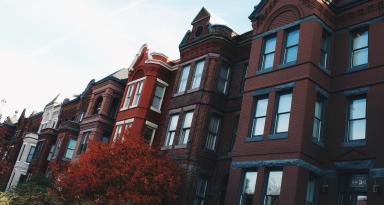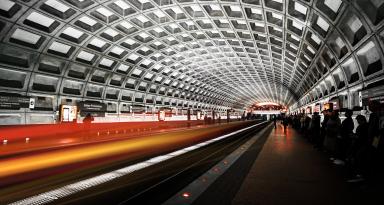

Photo: "H Street Corridor 3" by Ted Eytan is licensed under Attribution-ShareAlike 2.0 Generic (CC BY-SA 2.0)
Understanding Gentrification in D.C.
Gentrification and displacement have long been an issue in the Washington, D.C. area. In one of the most egregious historical examples, a massive federal urban redevelopment program in the 1940s and 1950s eradicated what had been a thriving neighborhood in the District’s Southwest Waterfront, driving out scores of Black residents and prosperous small businesses, as this 2018 Smithsonian article details. Many of those displaced ended up resettling across the water in Anacostia.
What happened in Southwest led to the rise of community activism and pushback in other neighborhoods in the District, but even so, gentrification continued for decades. A 2019 study by the National Community Reinvestment Coalition found that between 2000 and 2013, the District had the highest rate of gentrification of any major city in the nation. Of the Washington neighborhoods with lower-than average home values and family incomes in 2000, 40% had undergone gentrification, displacing an estimated 20,000 Black residents.
One area highlighted in the report was the Shaw neighborhood of D.C., which underwent such rapid change due to rising real estate values that a historic religious congregation , the Lincoln Temple United Church of Christ, was eventually forced to dissolve, after its membership dropped to just 20 congregants. But suburban areas outside the District saw displacement as well, according to the report. In a rental community in Arlington, Virginia, nearly 3,000 mostly Latino immigrants were uprooted when the property was sold and bulldozed so that new housing could be built.
In a follow-up 2020 report that covered a shorter time period from 2013 to 2017, Washington dropped to 13th among U.S. cities in gentrification, with just 16.8% of eligible local neighborhoods seeing displacement of residents. But though the pace had slowed, “Washington, D.C. still has a high intensity of gentrification,” the report noted.
A 2019 study by the National Community Reinvestment Coalition found that between 2000 and 2013, the District had the highest rate of gentrification of any major city in the nation.
“I think it [gentrification] is more subtle than it used to be,” explains Ari Theresa, an attorney specializing in land use who’s worked with residents and neighborhood groups across the District to combat gentrification in their areas. Instead of large numbers of homes being wiped out by massive urban renewal projects, he says, a lot of displacement now comes through smaller projects that aren’t in alignment with the existing community.
Theresa cites the generic example of a developer who tears down existing housing and replaces it with a large apartment complex filled with hundreds of one-bedroom and studio apartments. “They don’t house families, and it’s outside the price range of the people there, so it ends up transforming the neighborhood,” Theresa says. “People who’ve lived there can’t live there anymore.”
One tool that residents can use to resist displacement is a District law that requires building owners to offer tenants the first opportunity to purchase a building when it goes up for sale. (The law exempts single-family dwellings, unless they’re occupied by elderly or disabled residents.)
But residents don’t always know how to take advantage of the district’s strong tenant protections, according to Grace Guber, communications organizer at One DC, a prominent District-based organization that combats gentrification.
“Even if people get a notice that a building is up for sale and they have those rights, they often go, ‘Well, I have no idea how I would purchase a building,’” she says. “They think, ‘I can’t do that,’ and it gets brushed away.” That’s where the activist group comes in. “If we find out that a building is up for sale, we might start knocking on people’s doors and saying, ‘Hey, if you get a couple of other tenants of this building and form a tenants association, you can become the entity that buys this building.’”
One DC also pushes to make sure that agreements are honored between developers and the District to create low-income affordable housing within larger projects — even if a property has been dormant for years after the original deal was signed.
But community activists have to strike the right balance and find ways to protect local residents’ interests without blocking new development that might actually benefit them. “I think of areas in Wards 7 and 8 where there are food deserts, and there isn’t access to fresh produce,” Guber explains. In those places, arrival of a new grocery store might actually improve existing residents’ lives and health. “What they don’t need is luxury condos or a luxury bike store. That’s not helpful to them.”
Similarly, she says, a gourmet coffee shop — one common marker of a gentrifying neighborhood — might actually be beneficial, especially if it’s locally owned and pays workers above the minimum wage.
This dual nature of gentrification is what makes it such a challenging problem. As activists explain, protecting a neighborhood doesn’t mean trying to freeze it in time or keeping out new arrivals who can bring vitality and investment. Instead, the important thing is that longtime residents have a say in what their neighborhood becomes, and that they continue to have a place in it.
Last Updated: May 19, 2022

